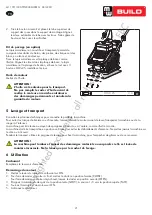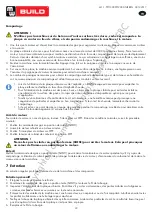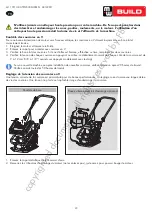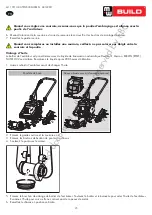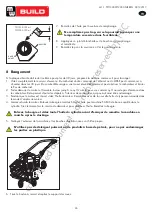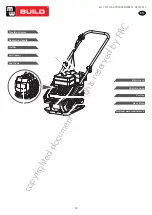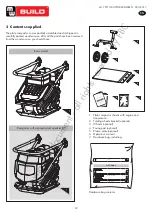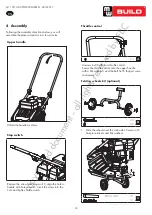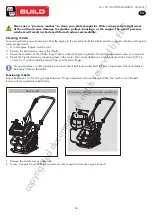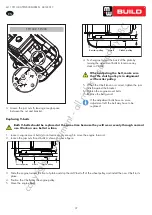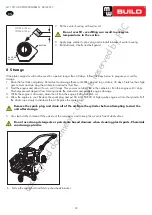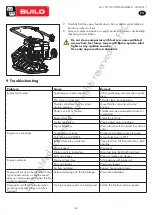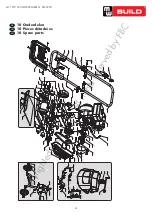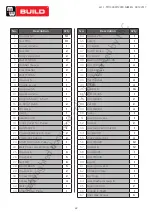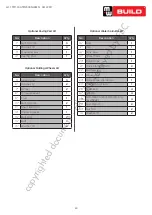
35
M1.1.TPT1300-TPT2000.NLFREN 08122017
EN
Compaction
WARNING!
Do not operate plate on concrete or on extremely hard, dry, compacted surfaces. The plate will
jump rather than vibrate and could damage both plate and engine.
1. After engine warms up, pull throttle lever to accelerate engine speed. Plate will begin vibrating and move forward.
2. The plate compactor is designed to run at an engine speed (engine take off shaft) of 3600 rpm (Normally considered full
throttle). Running the engine at lower speed will result in a decrease of compaction force and lower travel speed. It will
create excessive “out-of-synch” vibrations resulting in poor compaction, manoeuvrability, excessive wear to the machine,
and discomfort to the operator.
3. In operation, guide the machine, but let the compactor do the work. Bearing down on the handle is unnecessary and
causes shock absorber wear.
4. On level surface, the compactor moves forward rapidly. On uneven surfaces or inclines, light forward pressure on handle
may be required to assist the compactor in moving forward.
5. The number of passes required to reach a desired compaction level will depend on the type and moisture content of soil.
Maximum soil compaction has been reached when excessive kickback is noticed.
• When using a compactor on asphalt, water sprinkler kit is required to help prevent the bottom plate from adhering
to the hot asphalt surface.
• When using plate on paving stones, attach a pad to the bottom of the plate to prevent chipping or grinding surface
of the stones. A special urethane pad designed for this purpose is available as an optional accessory.
• While a certain amount of moisture in the soil is necessary, excessive moisture may cause soil particles to stick
together and prevent good compaction. If soil is extremely wet, allow it to dry somewhat before compacting.
• If soil is so dry as to create dust clouds while operating plate, some moisture should be added to the ground
material to improve compacting. This will also reduce service to the air filter.
Stopping engine
To stop the engine in an emergency, simply turn the engine switch to the OFF position. Under normal conditions, use the
following procedure.
1. Move the throttle lever to the SLOW position.
2. Allow engine idle for one or two minutes.
3. Turn the engine switch to OFF position.
4. Turn the fuel valve lever to the OFF position.
WARNING!
Do not move choke control to CLOSE to stop engine. Backfire or engine damage may occur.
Idle speed
Set throttle control lever to its LOW position to reduce stress on the engine when compacting is not being performed. Lowering
the engine speed to idle the engine will help extend the life of the engine, as well as conserve fuel and reduce the noise level of
the machine.
7 Maintenance
Maintaining your compactor will insure long life to the machine and its components.
Preventive Maintenance
1. Turn off engine. Engine must be cool.
2. Keep the engine’s throttle lever in its SLOW position, and remove spark plug wire from spark plug and secure.
3. Inspect the general condition of the plate compactor. Check for loose screws, misalignment or binding of moving parts,
cracked or broken parts, and any other condition that may affect its safe operation.
4. Remove all debris from the plate compactor with a soft brush, vacuum, or compressed air. Then use a premium quality
lightweight machine oil to lubricate all moving parts.
5. Clean the bottom of the compactor base as soon as it begins to pick up soil being compacted. The unit can not do a good
job if the bottom surface is not smooth and clean.
6. Replace spark plug wire.
copyrighted
document
- all
rights
reserved
by
FBC

